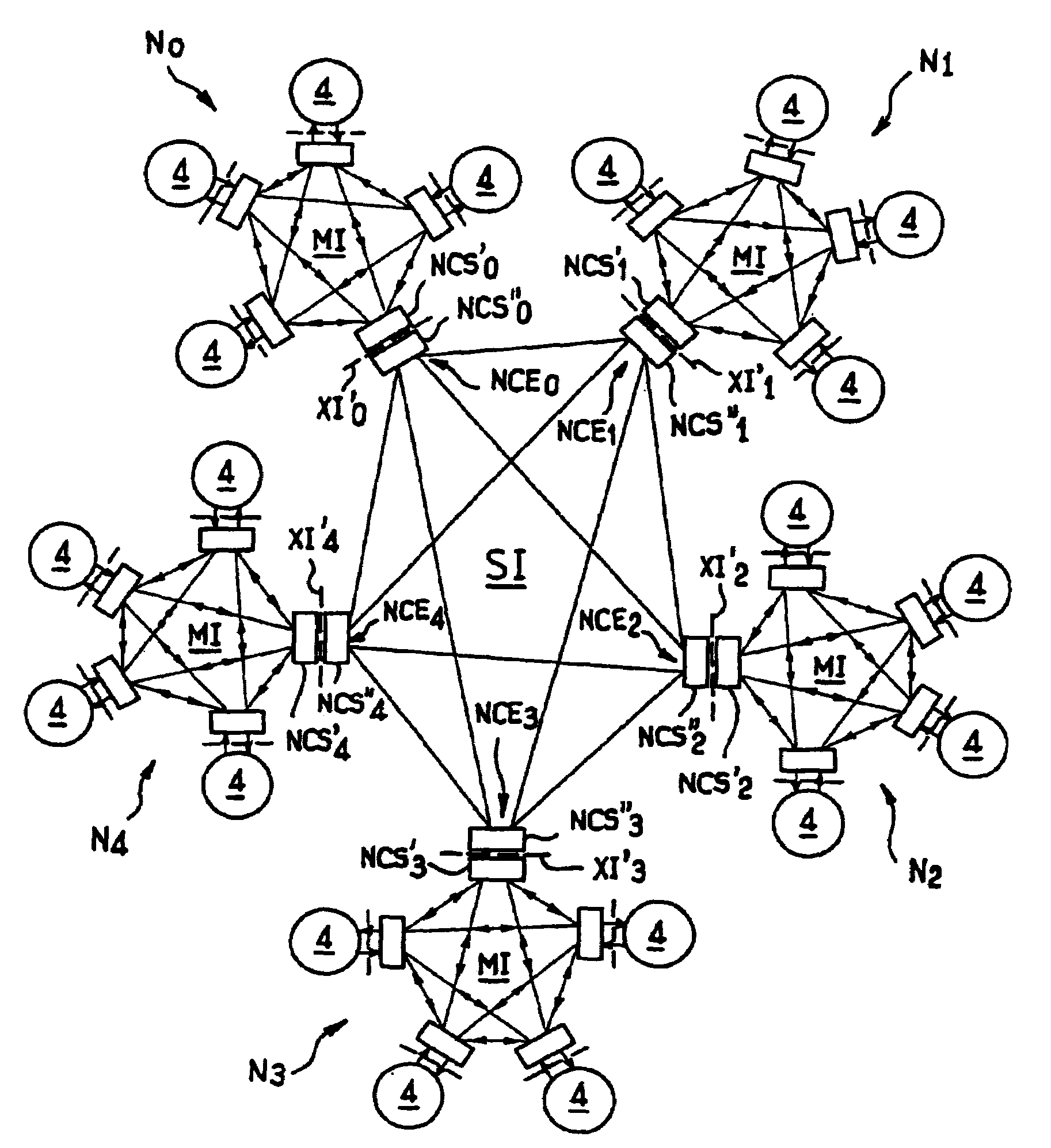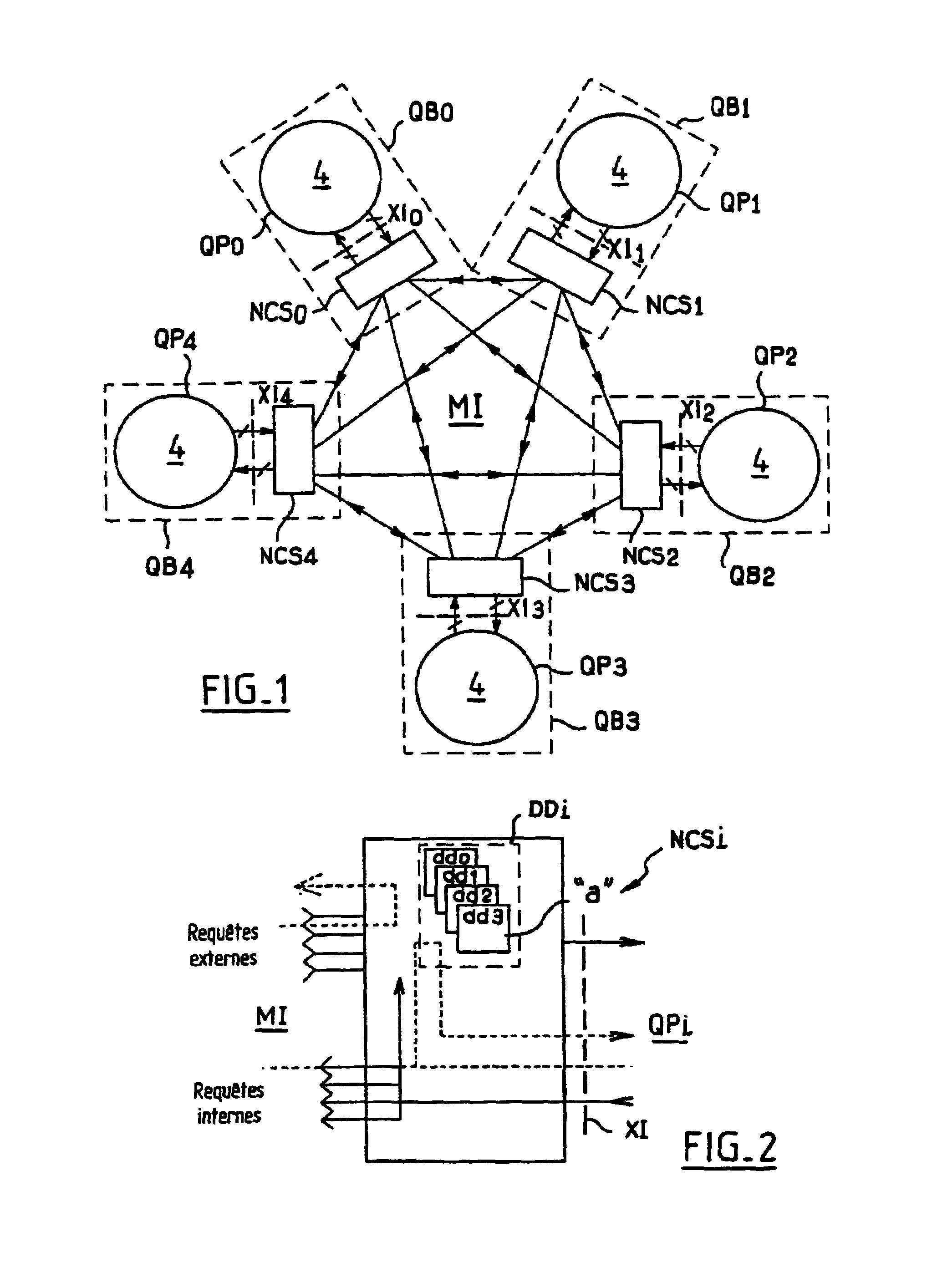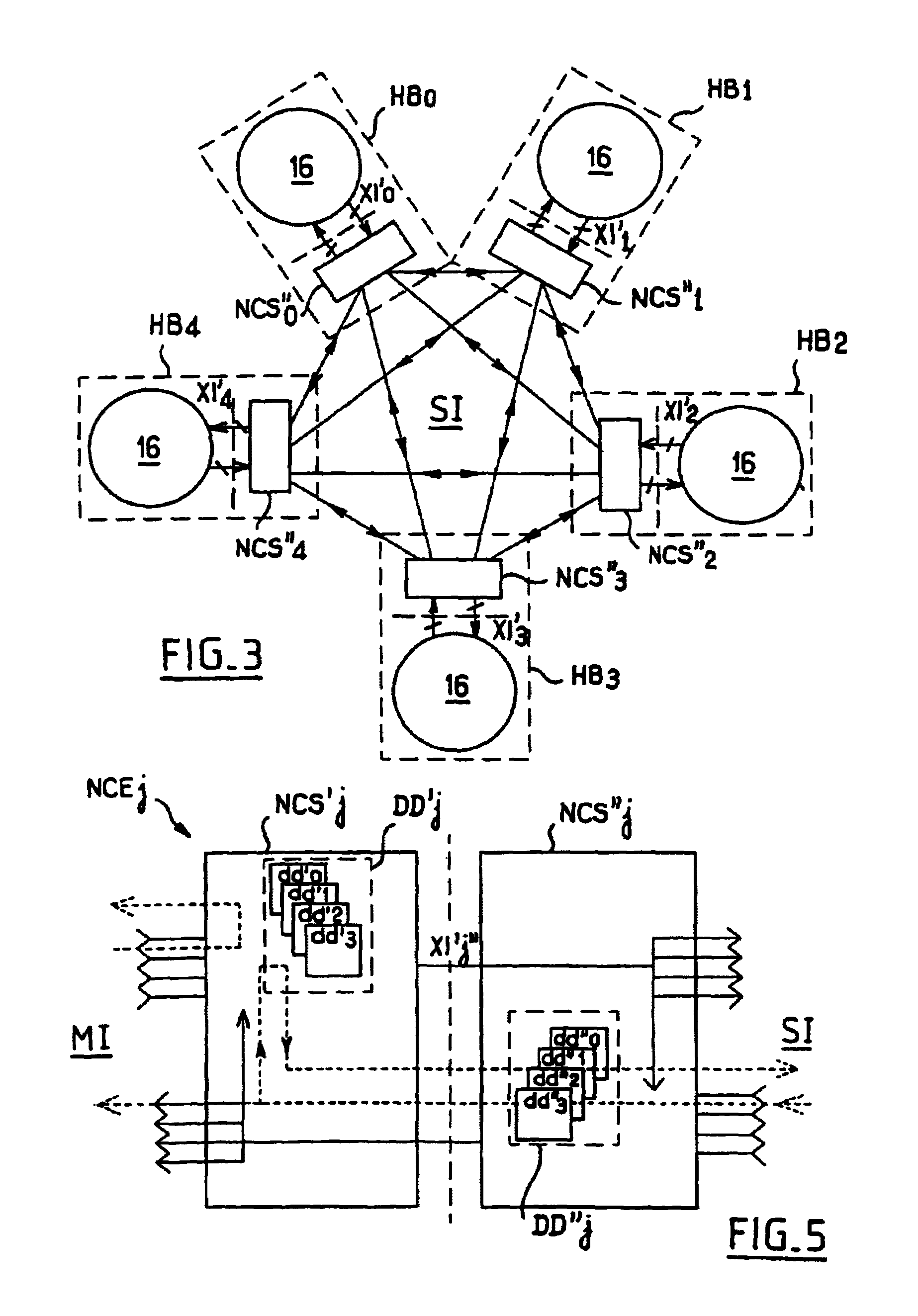Modular interconnection architecture for an expandable multiprocessor machine, using a multilevel bus hierarchy and the same building block for all the levels
a multiprocessor machine and modular interconnection technology, applied in the direction of digital computers, memory adressing/allocation/relocation, instruments, etc., can solve the problems of no longer existing data optimization in a given storage area, occupying a lot of space, and losing a large amount of usable bandwidth
- Summary
- Abstract
- Description
- Claims
- Application Information
AI Technical Summary
Benefits of technology
Problems solved by technology
Method used
Image
Examples
Embodiment Construction
)
[0057]FIG. 1 schematically illustrates an interconnection architecture for a quasi-UMA machine, typically located on the backpanel of a computer cabinet.
[0058]In this example, five multiprocessor modules QPi, with i=0 to 4, are interconnected by means of an interconnection module MI.
[0059]Each multiprocessor module QPi comprises four processors and their respective cache memories, not represented, forming a four-processor module.
[0060]The four-processor modules QPi are connected to the interconnection module MI by means of respective network connection agents NCSi.
[0061]XIi (eXternal Interface) defines the external interfaces between the four-processor modules QPi and their respective connection agents NCSi. They are respectively symbolized by a straight broken line.
[0062]The assembly formed by the four-processor module QPi, its connection agent NCSi and its external interface XIi are considered to constitute a “building block” of the first level of the interconnection architecture...
PUM
 Login to View More
Login to View More Abstract
Description
Claims
Application Information
 Login to View More
Login to View More - R&D
- Intellectual Property
- Life Sciences
- Materials
- Tech Scout
- Unparalleled Data Quality
- Higher Quality Content
- 60% Fewer Hallucinations
Browse by: Latest US Patents, China's latest patents, Technical Efficacy Thesaurus, Application Domain, Technology Topic, Popular Technical Reports.
© 2025 PatSnap. All rights reserved.Legal|Privacy policy|Modern Slavery Act Transparency Statement|Sitemap|About US| Contact US: help@patsnap.com



